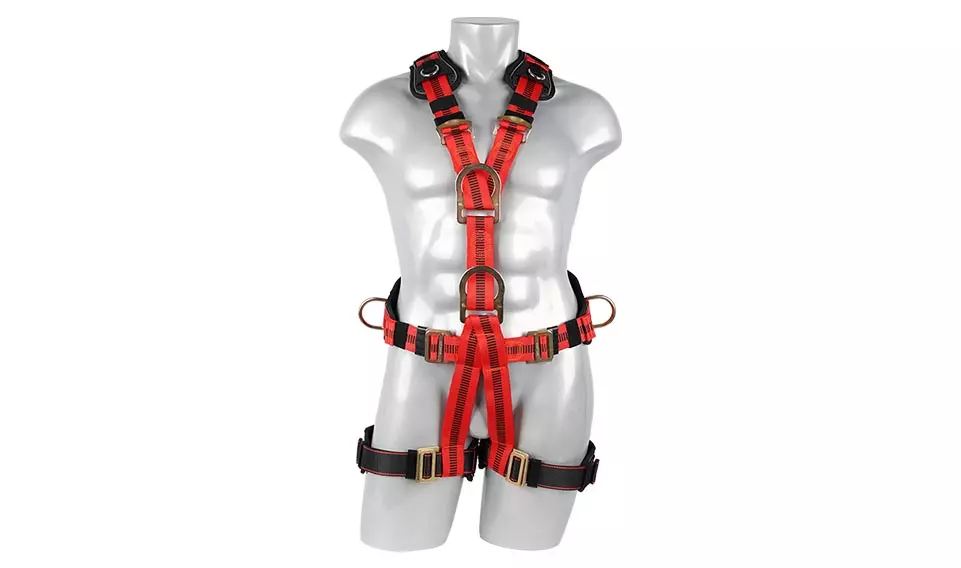
What are the safety protection measures for working at heights?
Safety protection measures for working at heights are an important part of ensuring the safety of construction workers. These measures mainly include the following aspects:
1. Wearing of personal protective equipmentSafety helmets: Any person entering the construction site must wear safety helmets according to the standards to prevent or reduce external force injuries to the head.
Safety harness: All personnel working at heights or in the air must wear safety belts that meet the standards and work requirements to prevent falling from heights. Safety belts should be hung high and used low, cannot be knotted or connected, and must be reliably hung in a firm place.
Anti-slip shoes: Workers working at heights should wear anti-slip shoes to prevent falls due to slippery or uneven ground.
2. Safety protection of the working environmentSafety nets: Safety nets must be installed below the high-altitude working points to prevent people or objects from falling from heights. For any construction without external scaffolding as protection, a fixed safety net must be installed on the first floor or at a height of 4m (sometimes 6m) from the ground, and another fixed safety net must be installed at a certain height (such as 12m), and at the same time, a safety net that rises layer by layer with the wall.
Guardrails: Guardrails should be installed at edge operations, such as unprotected balconies, material platforms and cantilevered platforms around the foundation pit, and unprotected floors and floor operations, to prevent people from falling from the edge. The guardrails must be closed from top to bottom with a safety net, and a tightly fixed footboard with a height not less than a certain standard (such as 18 cm) can also be installed under the railings.
Hole cover: For hole operations, such as building staircases, elevators, and reserved holes for equipment installation, measures such as guardrails and cover plates should be taken according to specific circumstances to prevent people or objects from falling from the hole.
3. Safety protection during operationClimbing operation: When performing climbing operation, operators should go up and down from the specified passages, and cannot climb in non-specified passages such as between balconies, nor can they climb at will using construction equipment such as crane booms. The ladders used should be inspected and accepted in advance according to relevant standards.
Suspended operation: When performing suspended operation, there should be a solid foothold for the operation, and protective railings, scaffolding, operating platforms, etc. should be set up according to the specific situation. The rigging, scaffolding boards, hanging baskets, hanging cages, platforms and other equipment used in the operation must be qualified by technical appraisal before they can be used.
Cross-operation: In cross-operation, it should be noted that operations should not be performed in the same vertical direction, and the position of the lower operation must be outside the range where the upper layer may fall. If the above conditions are not met, a safety protection layer must be set up, such as a tensioned safety net.
4. Other safety protection measuresSafety warning and supervision: Safety warning signs should be set up in the high-altitude operation range and the injury range of falling objects from high places, and a special person should be assigned to carry out safety supervision to prevent unrelated personnel from entering the operation range and falling objects from injuring people.
Safety inspection and acceptance: Before working at heights, safety protection facilities should be inspected and accepted. Only after passing the acceptance can work at heights be carried out.
Weather conditions: In case of severe weather such as strong winds, dense fog, and heavy rain, outdoor high-altitude work shall not be carried out.
Physical examination and training: Personnel engaged in high-altitude work must undergo regular physical examinations, and persons with diseases that are not suitable for high-altitude work shall not engage in high-altitude work. At the same time, personnel who are suspended, climbed at heights, and set up high-altitude safety facilities must undergo special safety operation training in accordance with relevant national regulations, and obtain special operation operation qualification certificates before they can go to work.
In summary, the safety protection measures for high-altitude work involve the wearing of personal protective equipment, safety protection of the working environment, safety protection during the operation, and other safety protection measures. The implementation of these measures can effectively reduce the risks of high-altitude work and ensure the safety of construction workers.












